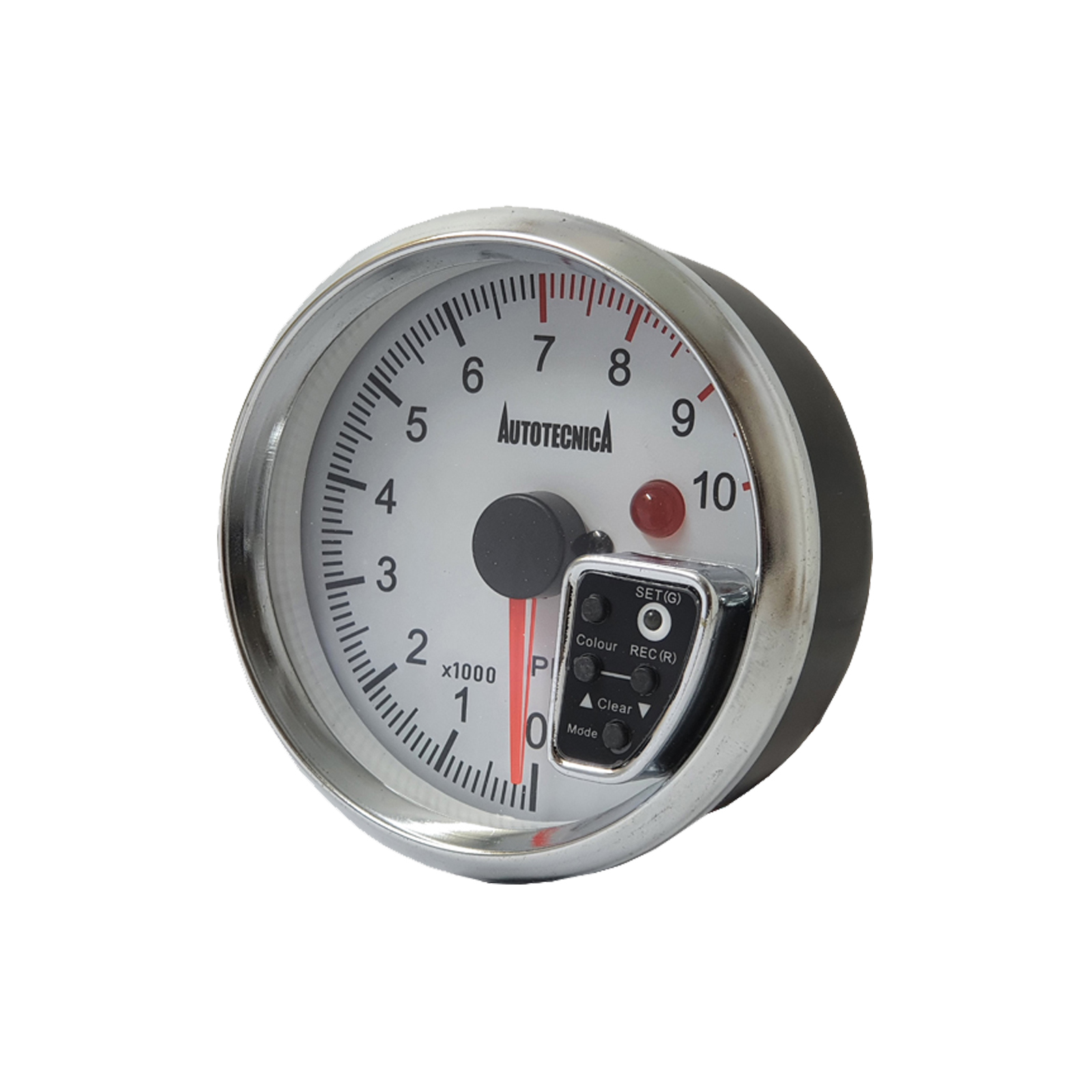Professional Tips for Keeping and Calibrating Your Tachometer
Professional Tips for Keeping and Calibrating Your Tachometer
Blog Article
The Significance of a Tachometer in Checking Engine Speed and Efficiency in Automotive Applications
In the world of automotive engineering, the tachometer stands as an essential instrument in the motorist's collection, supplying a straight window into the inner operations of a car's engine. Beyond its feature as a simple scale of changes per minute (RPM), the tachometer acts as an important tool for fanatics and specialists alike, providing real-time understandings right into engine efficiency and health. Comprehending the value of this device goes past surface-level observations, delving into the intricate connection in between engine rate, power outcome, and overall driving experience. As we discover the diverse duty of the tachometer in automotive applications, a much deeper appreciation for its influence on lorry dynamics and performance begins to arise.
Value of Keeping Track Of Engine RPM
Checking engine RPM, or transformations per min, is an important facet of vehicle maintenance and performance assessment. Engine RPM directly correlates with the speed at which the engine's crankshaft turns, indicating exactly how promptly the engine is running - tachometer. By monitoring RPM, technicians can evaluate the health and wellness of the engine, identify potential problems, and fine-tune efficiency. An abnormal RPM reading might signal issues such as engine misfires, malfunctioning ignition system, or problems with the gas distribution system. Consistently high RPM readings might indicate aggressive driving behaviors or the need for a higher gear change to boost gas effectiveness.
Furthermore, checking engine RPM is important for performance analysis in racing and high-performance cars. In recap, checking engine RPM is not just crucial for discovering issues but additionally for maximizing engine efficiency in various automotive applications.

Benefits of Real-Time Data
In automotive applications, real-time information plays an important duty in giving instant insights into the efficiency and problem of the lorry. By constantly monitoring various specifications such as engine rate, temperature, gas intake, and a lot more, real-time information uses various benefits that contribute to enhanced efficiency and security when driving.
One significant benefit of real-time information is its ability to sharp vehicle drivers and professionals to any type of abnormalities or problems without delay. This positive method allows quick recognition of prospective issues, permitting for timely treatments to avoid more damages or failures. Furthermore, real-time information assists in performance optimization by providing prompt comments on driving behaviors and engine efficiency. Chauffeurs can change their habits in real-time based on this information to attain much better gas economy and extend the lifespan of their automobile.

Furthermore, real-time data plays an important duty in contemporary automotive diagnostics, enabling specialists to swiftly diagnose and address malfunctions. This causes lowered downtime, lower upkeep expenses, and eventually, improved general car integrity and longevity (tachometer). By harnessing the power of real-time data, vehicle stakeholders can make educated decisions that favorably click reference influence both the performance and longevity of the car
Influence On Gear Shifts
Effective gear changes in vehicle applications considerably influence general efficiency and driving experience. The tachometer plays an essential function in optimizing gear changes by offering real-time engine speed data to the vehicle driver. When approaching the redline on the tachometer, it indicates the chauffeur to upshift to avoid over-revving the engine and causing possible damage. On the various other hand, downshifting at the ideal moment can help keep the engine in its power band, ensuring responsive acceleration when needed.
Furthermore, the pop over here tachometer help in accomplishing smoother gear changes, specifically in hands-on transmissions. By monitoring engine speed, motorists can perform equipment shifts at the optimum RPM range, minimizing snagging activities and decreasing wear on the transmission elements. This precision in equipment adjustments not just improves driving convenience however additionally adds to fuel efficiency.
Enhancing Fuel Efficiency
Given the crucial duty the tachometer plays in maximizing gear shifts for efficiency and engine wellness, it straight contributes to maximizing fuel effectiveness in automobile applications. By providing real-time responses on engine speed, the tachometer assists vehicle drivers in maintaining one of the most efficient RPM array for fuel economic situation. When drivers consistently keep track of the tachometer and adjust their motoring practices appropriately, they can stay clear of unneeded fuel consumption created by over-revving or hauling the engine.
Furthermore, the tachometer helps drivers recognize the most fuel-efficient equipment to be in at any type of given moment, stopping the engine from working tougher than needed. In conclusion, the tachometer offers as an important tool in improving gas efficiency by promoting optimum driving routines and identifying locations for improvement in the lorry's performance.

Making The Most Of Engine Longevity
The tachometer's duty in keeping an Extra resources eye on engine rate and performance contributes in making sure the longevity of automobile engines. By utilizing the tachometer properly, chauffeurs can enhance engine longevity via mindful RPM management. Continually revving an engine too high can lead to excessive wear and tear on vital parts, such as the pistons, shutoffs, and bearings. Over time, this can result in decreased engine efficiency and possible malfunctions. Keeping an eye on the tachometer allows drivers to remain within the recommended RPM range for their lorry, preventing unneeded strain on the engine and prolonging its life expectancy.

Verdict
In final thought, the tachometer plays an essential duty in keeping track of engine rate and performance in automotive applications. By supplying real-time data on RPM, it permits efficient gear changes, enhanced gas efficiency, and taken full advantage of engine durability. This device is vital for maintaining ideal engine efficiency and ensuring the general capability of a car.
Report this page